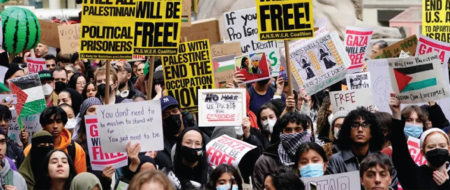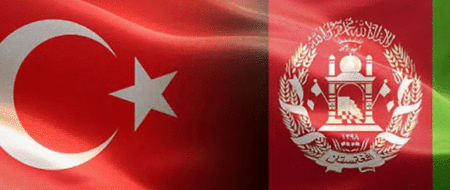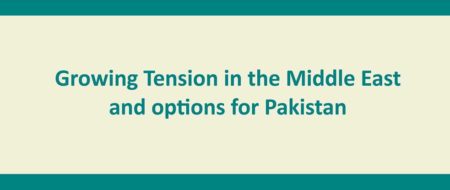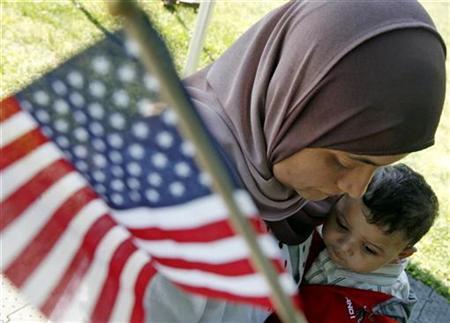Afghanistan 6 Years after the Taliban’s Ouster
In modern history, Afghanistan has been the battlefield of major powers of the world. Its strategic location as a bridge between South Asia and Central Asia has always tempted world powers to lock horns with each other here. Its security situation consistently affects not only the countries in the region but also other major powers.
In the nineteenth and early twentieth centuries, two major powers of the world, Britain and Russia, struggled to impose their influence in Afghanistan. Britain was in control of British India, which now makes up Pakistan and India, while Russia had control over the Central Asian states. Afghanistan was a buffer zone between them. Three major wars were fought between Afghans and Britain in which the latter’s forces were vanquished.
In the twentieth century, the cold war between the United States and the Union of Soviet Socialist Republics (USSR) found a focus in Afghanistan. Once again, this country became the battlefield as the two great powers fought for supremacy. Finally, the mujahidin ousted the pro-Soviet government in Kabul with the support of Pakistan, Iran, Saudi Arabia, the USA and its allies. Russian troops had to withdraw and the defeat led to the disintegration of the USSR. This was during the last decade of the last century.
A civil war then broke out among different groups, leaving the state in the throes of anarchy and chaos. It was in this environment that the Taliban entered the stage in 1994. They swept across the country in no time and had 90 percent of Afghanistan under their control within three years. Only some of the northern parts of the country remained in the control of the Northern Alliance. However, the Taliban government could not get international approval because of its strict imposition of laws, which it called Shari‘a.
While the struggle continued between the Northern Alliance and Taliban for the total control of Afghanistan, the tragic incident of September 11, 2001 occurred in the United States, which in response launched a global “war on terror.” The United States accused Osama bin Laden and his al-Qaeda organization of launching the attacks and asked the Taliban government to hand bin Laden over, but the Taliban refused to comply. The United States, with the support of the North Atlantic Treaty Organization (NATO) and some other allied countries, including Pakistan, attacked Afghanistan towards the end of 2001. The Taliban government was ousted and a new regime was installed in Kabul with Mr. Hamid Karzai as president. A new constitution was framed and passed, and presidential and parliamentary elections were held. A parliament was installed and Afghanistan adopted presidential democracy.
The stated objectives of the United States and allied forces were to oust the Taliban government on the grounds that it was harboring terrorists, to dismantle the terrorist network, and bring bin Laden and his followers to justice in the United States.
Six years have elapsed since the American attack, and yet the resistance offered by the resurgent Taliban shows no signs of dissipating. The Taliban are confronting the forces of 37 countries, especially in the south and east of the country. The security situation is far from satisfactory. To quote from the Country Reports on Terrorism released by the Office of the Coordinator for Counterterrorism on April 30, 2007, “…the Taliban-led insurgency remained a capable and resilient threat to stability, particularly in the Pashtun south and east. Although the insurgency absorbed heavy combat losses, its funding and ability to recruit foot soldiers from its core base of rural Pashtuns remained undiminished. This was due in part to aggressive Taliban propaganda. Taliban information operations have grown increasingly sophisticated ….”
Except for Kabul, where there is relative peace, the country, especially in the south and east, is literally in the control of the Taliban. According to Michael McConnell, Director of US National Intelligence, Karzai government controls only 30 percent of Afghanistan while independent analysts believe it is even less, some 15 percent . Taliban’s control is evident from the fact that British troops had to strike a peace deal with them in Musa Qila, Helmand province last year, and that direct negotiations took place between the Taliban and the South Korean government for the release of Korean missionaries a few months ago.
Media reports suggest that there is very heavy fighting under way between NATO troops and the Taliban, in which scores of people, both combatants and civilians, die almost every day. According to the UN Secretary General, there were 8,000 conflict-related deaths in Afghanistan in 2007, nearly a fifth of whom were civilians. The average number of incidents per month has risen 33 percent from 425 last year to 566 this year.
This situation of law and order has crippled the Afghan government and drawn criticism from different quarters of Afghan society. Some call the regime a failure. The lawmakers cannot even go to their constituencies to meet the public and listen to its problems, as testified by the killing of six lawmakers in a suicide bomb attack in November 2007. Governance is presently a tough challenge for the Karzai government.
Meanwhile, the key US objective of apprehending the al-Qaeda leadership remains elusive. Osama bin Laden, his deputy, Aiman Al-Zawahiri, Taliban leader Mullah Omar and other key members of the leadership are still at large. Often, the accusation is hurled at Pakistan that it is hiding them in its tribal areas, which Pakistan vehemently rejects. As Alan Johnson puts it, “NATO is ‘not winning’ in Afghanistan, failure would be a catastrophe, and time is running out. That was the message of three reports published in January by the Afghan Study Group, Oxfam and the Atlantic Council.” Differences are also surfacing among the NATO members regarding strategy to deal with the Taliban, and a number of members countries are reluctant to, or have said out right no, to send more troops to Afghanistan.
Being an ally of the United States, Pakistan is also participating in the war on terror and has sent 80,000 troops to its tribal areas, where it is primarily trying to control the infiltration of the Taliban into Afghanistan. The spillover effects of the Afghan war can be witnessed in Pakistan’s tribal areas. The tribal people have linguistic, ethnic, cultural and religious links with the tribes across the Durand Line and are affected by whatever happens to their fellow tribal people across the border. Pakistan is being pressured by the United States to allow it to conduct direct military operations in its tribal areas. US pressure and its effects on Pakistan’s policies have created a situation of extreme unrest in Pakistan, leading not only to a political backlash but also violent reactions, even in settled areas.
One of the stated objectives of the international community led by US was to rebuild the country. Although there is some development work under way in Afghanistan, the rebuilding process is very slow. The problem lies partly with the conflict raging in some regions, but many critics also blame the allied countries for not being interested in reconstruction. While they agree that Afghanistan has to depend on foreign aid for the present, analysts criticize the manner in which the aid is being allocated and used. Citing figures, the claim that much of the funding goes to military operations and very little to actual reconstruction, and even this small share is misused, with huge chunks allotted to salaries and perks for nongovernmental organization (NGO) personnel.
A recent OXFAM report says that while around $10 billion promised to Afghanistan is still to be delivered, two thirds of the delivered aid is not spent through the government and 40 percent finds its way back to the donor countries in the from of consultation fees and pays of the expatriates .
In this backdrop, there has been little success on the economic front. The country has been completely devastated by three decades of war and internal fighting. There are no industries, and agriculture has suffered. Afghanistan does not produce sufficient energy to meet the requirements of its people and economy either. Moreover, a huge number of Afghan refugees from Pakistan, Iran and other countries have been repatriated and they, together with enormous numbers of internally displaced people, need rehabilitation. As a result, the government is struggling to provide economic opportunities to its people, and Afghanistan has once again become the world’s top poppy producer and exporter. Notably, poppy production had declined to zero under the Taliban, who banned it. But now, Afghanistan produces more than 90 percent of the world’s poppy. This has become the major source of livelihood for hundreds of thousands of Afghans. With no alternative livelihood support for the people, the task of controlling poppy production is daunting by any standard.
Politically, too, the Karzai government is under fire from the people. There is growing distrust of the government and people feel alienated from the current system. The Karzai government also seems incapable of stopping the deaths of civilians at the hands of allied forces; this rising death toll and the presence of foreign troops can hardly be expected to make the Afghans feel more secure, or indeed win their hearts and minds.
Thus, there remains a lot to be achieved by the US and its allies in Afghanistan. In the words of an Aid Worker, winning demands from the coalition to “rebuild houses and roads, bring two million people out of starvation and unemployment, establish the rule of law, revive a largely dead economy, wipe out corruption and crime, building hydro power plants, educate generations of illiterate, and institute a capable and legitimate government able to mend and transcend ethnic rifts. All of this while fighting off a resurgent Taliban.” What, it is asked, is the best course of action to be taken in Afghanistan to set the country on the track of peace, prosperity and tranquility? And who among the different players could play an effective role?
There are many national and international players currently working in Afghanistan. However, as stated in Afghanistan: A Study on the Prospects for Peace, a report issued in March 2008 by the Canadian Council for International Cooperation, their efforts are disconnected. The heter-ogeneity of players and their objectives has to be explored and a point of agreement identified. In addition, their real goals need to be understood. Hard questions need to be faced: How could the security situation best be improved? Will the foreign forces leave or not? In either case, what would be the future scenario? Will the resisting forces be brought to the negotiating table and on what conditions? How can reconstruction be carried out? Can poppy production be replaced with other livelihood programs given the ground realities? Above all, is there a need to reassess the goals and the overall strategy on the basis of ground realities?
This special issue of Policy Perspectives is an attempt to answer some of these questions. The subjects discussed in the issue include international objectives, security challenges, resistance and dialogue, presence and role of NATO, refugees, opium economy, Durand line, tribal areas and the madrassahs. The situation of Afghanistan is deeply complex, and the topics of discussion in this issue by no means comprise an exhaustive discourse of the country’s problems. However, we hope to continue to build on the ideas and analyses presented here through further special issues on Afghanistan in coming months.
We take this opportunity to deeply thank all of our contributors for this issue including Mr. Fazlur Rahim Muzaffary, Ms. Aisha Ahmad, Mr. Imtiaz Gul, Mr. Shayeq Qassem, Dr. Bushra Hamid, Dr. Nasreen Ghufran and Dr. Misbah Ullah. Although they hail from different backgrounds in Pakistan and Afghanistan, they have one trait in common: they reflect an indigenous perspective on the issues confronting Afghanistan being part of the ongoing situation or in direct interaction with the stakeholders on ground. This unique perspective is reflected in all the articles presented in this issue, particularly in the emphasis on rethinking existing approaches and developing alternative approaches that are informed by a clear understanding of the effects of different stakeholders’ policies on the ground. We hope this issue will illuminate some of the gray areas in the search for solutions to the current Afghan crisis, and are confident that this effort will enrich study of Afghanistan.
We also owe our gratitude to Mr. Sheharyar M. Khan and Mr. Babar Mufti for their editorial contributions at different stages in the preparation of this special issue.
Office of the Coordinator for Counterterrorism, Country Reports on Terrorism (Washington, DC: U.S. Department of State, April 30, 2007), http://www.state.gov/ s/ct/rls/crt/2006/82734.htm (accessed March, 10, 2008).
Pamela Hess, “US Official: Karzai controls just 30% of Afghanistan”, http://cnews. canoe.ca/ CNEWS/War_Terror/2008/02/27/4880321-ap.html
Mathew Weaver, “Afghan Death Toll Soars to 8,000 last year”, Guardian. March 11, 2008, http://www.guardian.co.uk/world/2008/mar/11/afghanistan.unitednations (ace-ssed March 20, 2008)
Alan Johnson, “Lost in Afghanistan,” Commentisfree…, March 10, 2008, http:// commentisfree.guardian.co.uk/alan_johnson/2008/03/lost_in_afghanistan.html (acc-essed March 12, 2008).
Richard Norton-Taylor , “40% of Afghan aid returns to donor countries” Guardian, March 25, 2008, http://www.guardian.co.uk/world/2008/mar/25/afghanistan. inter-nationalaidanddevelopment1
The report is based on the findings of 58 interviews carried out in Afghanistan in January and February 2008. Those interviewed for the report included international diplomats, international NGOs, Afghan NGOs, Afghan government officials and Afghan community leaders. (Source: Canada’s Coalition to End Global Poverty, “Report Calls on International Community to Support Peace Efforts,” Focus on Peace in Afghanistan, March 10, 2008, http://www.ccic.ca/e/004/news_2008-03-10_ focus_ on_peace_in_afghanistan.shtml [accessed March 12, 2008]).






